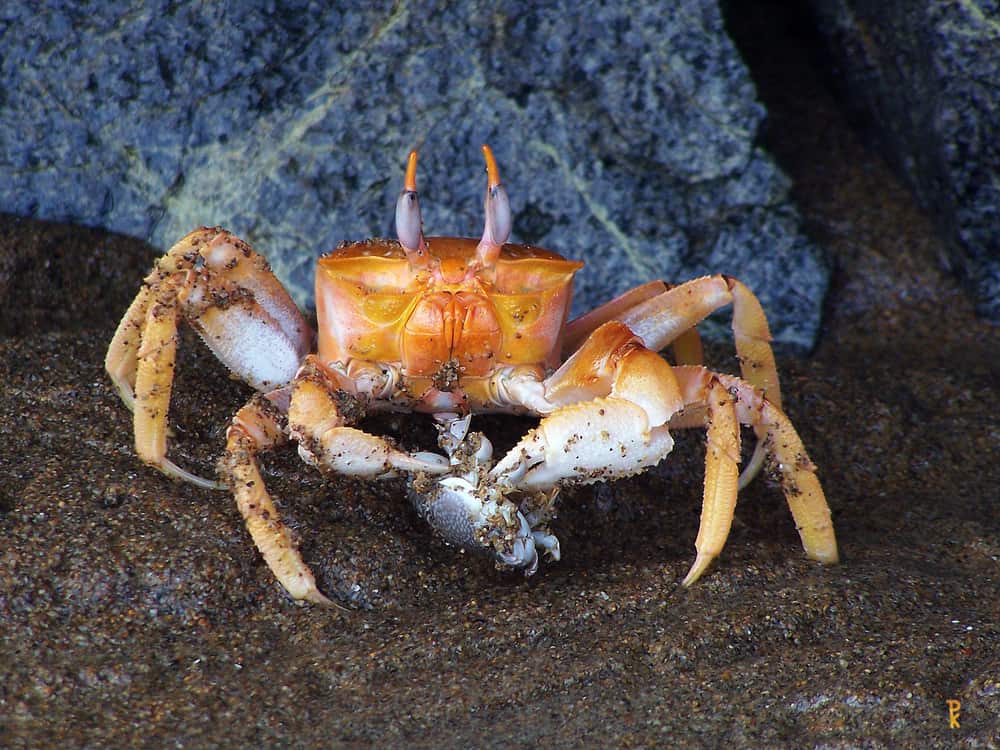As a new crab owner, you’re probably wondering what crabs eat and how to feed them properly at home. With some basic knowledge about crab diets and feeding tips, you can easily provide your pet crab with a nutritious diet.
An Overview of Crab Diets
In the wild, crabs are omnivores and eat both plant and animal matter. They forage for food along the ocean floor, searching for bits of algae, plant matter, small fish, mollusks, worms, and even fungi. At home, pet crabs should be fed a varied diet that mimics their natural omnivorous tendencies.
Here are some of the main components of a balanced crab diet
-
Protein Crabs need protein to support tissue growth and maintenance. Good protein sources include freeze-dried krill shrimp mealworms, bloodworms, and crickets.
-
Fruits and Vegetables For fiber, vitamins and minerals, offer fruits like melons, berries, mango and vegetables like leafy greens, carrots and zucchini
-
Calcium: For strong shells, crabs need calcium from sources like coral sand, cuttlebone and calcium supplements.
-
Algae: Dried seaweed provides vitamins, minerals and carotenoids.
Feeding Recommendations by Species
While all crabs are omnivores, their specific dietary needs can vary by species. Here are some species-specific crab diet recommendations:
-
Hermit crabs: They thrive on fruits, vegetables, protein sources, nutritious pellets and treats. Avoid too much starchy foods.
-
Land crabs: Offer a variety of fruits, vegetables, nuts, seeds, proteins and calcium sources.
-
Freshwater crabs: Provide protein-rich foods like bloodworms, vegetation and spirulina powder.
-
Marine crabs: Feed them protein-rich foods like shrimp, krill, mussels along with seaweed and veggies.
Tips for Feeding Pet Crabs
Follow these tips to meet your crab’s dietary requirements:
-
Feed them twice per day and remove uneaten food to avoid spoilage.
-
Provide a shallow dish of fresh water to keep them hydrated.
-
Offer foods in small pieces they can easily grasp with their pincers.
-
Mix up their diet and try new healthy foods to prevent boredom.
-
For land crabs, provide mainly dry foods; for aquatic crabs, include soft, moist foods.
-
Use coral sand or cuttlebone as a calcium source and provide it in a separate dish.
-
Rotate food items to ensure they get all required nutrients.
-
Refrigerate perishable foods like fruits, veggies and meat, and discard after 24 hours.
-
Wash hands before and after handling foods to prevent contamination.
Foods to Avoid Feeding Crabs
Some foods are unhealthy or even unsafe for crabs:
-
Salty foods like lunchmeat or canned seafood.
-
Dairy products which can cause digestive upset.
-
Starchy foods like bread, pasta or beans, which they can’t digest properly.
-
Citrus fruits, onions and chocolate which can be toxic.
-
Uncooked meat which may contain bacteria.
Setting Up a Feeding Station
Designate a specific area of your crab’s habitat as their feeding station. Here are some tips:
-
Use shallow plastic or ceramic bowls that they can easily access.
-
Scatter food to mimic natural foraging behaviors.
-
Position food and water dishes away from heat lamps to prevent spoilage.
-
Clean dishes thoroughly after each meal to prevent mold growth.
Signs Your Crab is Getting Proper Nutrition
With the right diet, your crab will thrive. Signs of proper nutrition include:
-
Active foraging when food is introduced.
-
Strong grip and dexterity with their pincers.
-
Clear, bright eyes.
-
A full abdomen (not shriveled).
-
Solid, heavy shell with no pitting or discoloration.
-
Normal, healthy molting cycles.

To Hunt or Be Hunted
Did you know that crabs smell from their antennae?! Crabs have chemoreceptors located within their antennae that allow them to detect chemicals in the water that are released by their prey. These chemoreceptors also help in determining what prey is worth eating and what they should be attracted to or deterred by. Furthermore, crabs have separate antenna-like appendages close to the antennae that help them to sense their surrounding environment.
Crabs have an excellent sense of taste and smell, which make for great hunters, and their senses help them get away quickly from approaching predators.
Once they come into contact with their preferred meal, crabs can “taste” using hairs on its mouthparts, pincers, and even its feet.
What species do crabs need to look out for so they are not on the bottom of the food chain?
Like most small living things, crabs have multiple predators that they must keep on their radar throughout the day. Taking the Dungeness crab for example, their natural predators include halibut, dogfish, sculpins, octopus, sea otters, and even other species of crab. Salmon also feed on crab larvae.
What species hunt crabs depend on their environment.
According to the Alaska Department of Fish and Game,
“Species which prey upon hard-shelled Dungeness crabs include humans, sea otters, octopus and Pacific halibut; larger Dungeness crabs and staghorn sculpin are important predators on juvenile Dungeness crabs in some areas. In the soft-shell state, they are preyed upon by many additional species.”
And in comparison, looking at the Blue crab, found near the Chesapeake Bay:
“Predators include large fish like croakers and red drum; fish-eating birds like great blue herons; and sea turtles.”
How to Eat Crabs
FAQ
What do crabs naturally eat?
Crabs are omnivores, feeding primarily on algae, and taking any other food, including molluscs, worms, other crustaceans, fungi, bacteria, and detritus, depending on their availability and the crab species. For many crabs, a mixed diet of plant and animal matter results in the fastest growth and greatest fitness.
What is a crab’s favorite food?
Crabs eat a mixed diet, ranging from small prey like algae, seaweed, worms, clams, and shrimp to larger prey like snails, mussels, squid, and small fish. Some crab species eat harder foods like barnacles, starfish, and sand dollars.
How to take care of crabs at home?
Can crabs eat bread?
